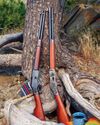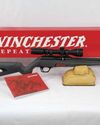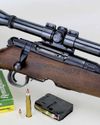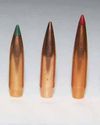
This is certainly one for the books: As more and more people find themselves out of work because of technological advances, some prominent voices are suggesting the answer to the perils of the fifth industrial revolution is a return to the very thing the first industrial revolution sought to crush: self-employed craftsmen, slowly and painstakingly producing high quality items.
That’s right: As we witness the relentless ascent of the CNC machine, with one operator doing the work of a hundred people, maybe those other 99 can earn a living wielding a file and making things one at a time.
This view was evinced by none other than Britain’s illustrious newsweekly, The Economist, a voice of sanity since 1843. Quoting a paper that appeared in the Academy of Management Annals, written by five prominent academics, The Economist suggested that the answer to technology-driven unemployment is a return to creativity and high-priced, high-quality, one-of-a-kind items like a Harry Pope target rifle, say, or a Marvin Huey gun case.
Correct me if I’m wrong, but was this not exactly what all the time-and-motion experts and automation gurus have been fulminating against since the first industrial revolution, which kicked off around 1765 with the emergence of the steam engine and the rise of England’s “dark Satanic mills?” Ironically enough, yes.
This story is from the November - December 2021 edition of Rifle.
Start your 7-day Magzter GOLD free trial to access thousands of curated premium stories, and 8,500+ magazines and newspapers.
Already a subscriber ? Sign In
This story is from the November - December 2021 edition of Rifle.
Start your 7-day Magzter GOLD free trial to access thousands of curated premium stories, and 8,500+ magazines and newspapers.
Already a subscriber? Sign In

CIMARRON .32-20 Short Rifle & Carbine
In the heyday of Winchester Repeating Arms Company lever guns, it offered muskets, standard rifles, short rifles and saddle ring carbines.

Remington's Model 722 and .222 Cartridge
It's easy enough to define what a varmint is, those pesky critters that tear up pastures, flower beds and all kinds of expensive crops people need for various reasons - most importantly, to make a living and/or something with which to feed themselves.

Coyote Bullets
What is Best for You?

Remington's 5mm Rimfire Magnum
Shooting a Classic

Winchester's New Wildcat
The Ultralight Rimfire Varmint Rifle

.223 Remington from .30-30 Winchester?
Multitasking for Varmints

LOADS FOR A .22 TCM
The .22 TCM first appeared commercially in 2012, chambered in a Rock Island Armory 1911-style handgun.

Everybody Loves Velocity
The 4,500-fps WSSM Project

A BOLT-ACTION FRANCHI 224 VALKYRIE
Testing New Loads

.22 Winchester Magnum Rimfire
Shooting Revolvers